
 Swipe
Swipe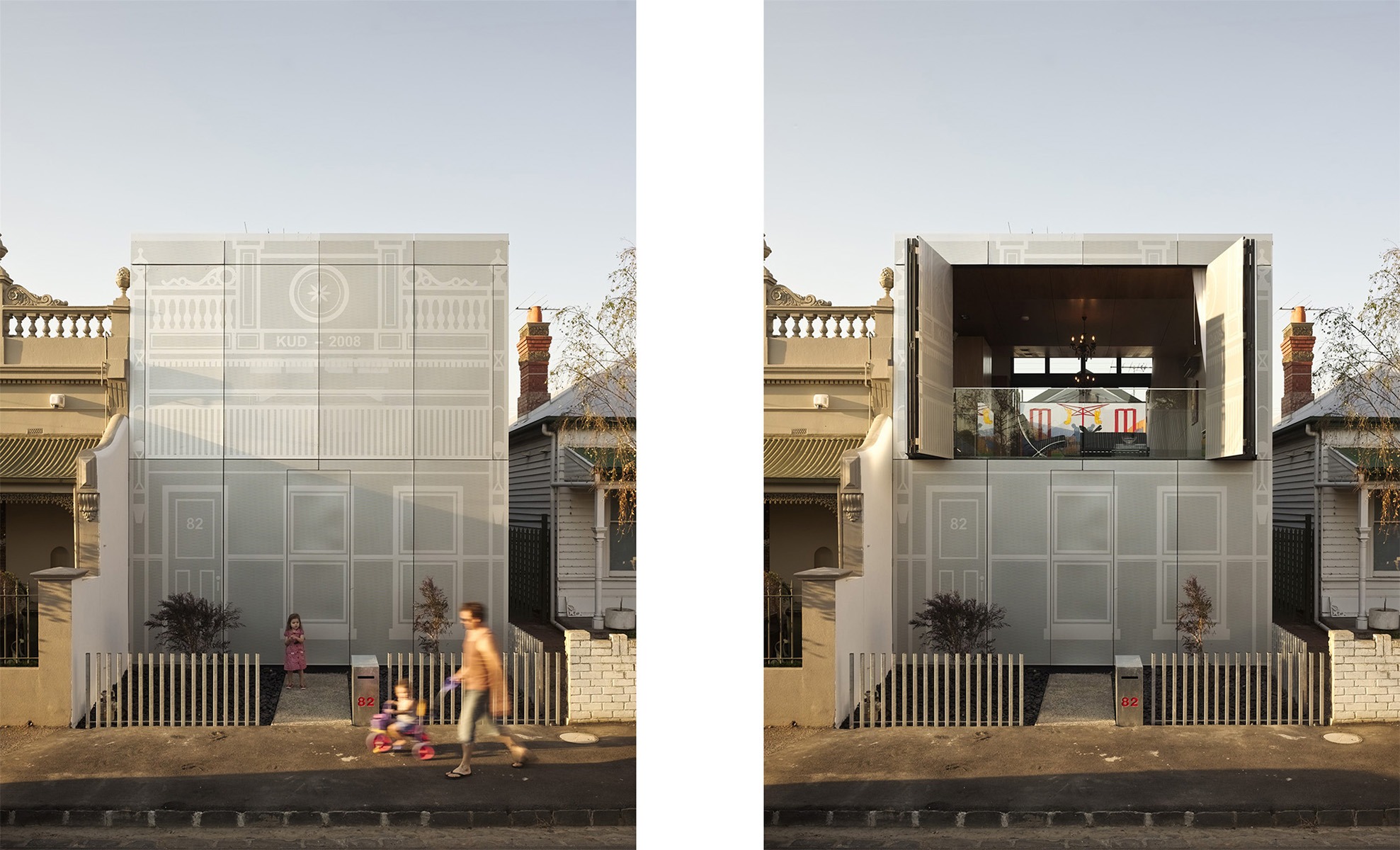
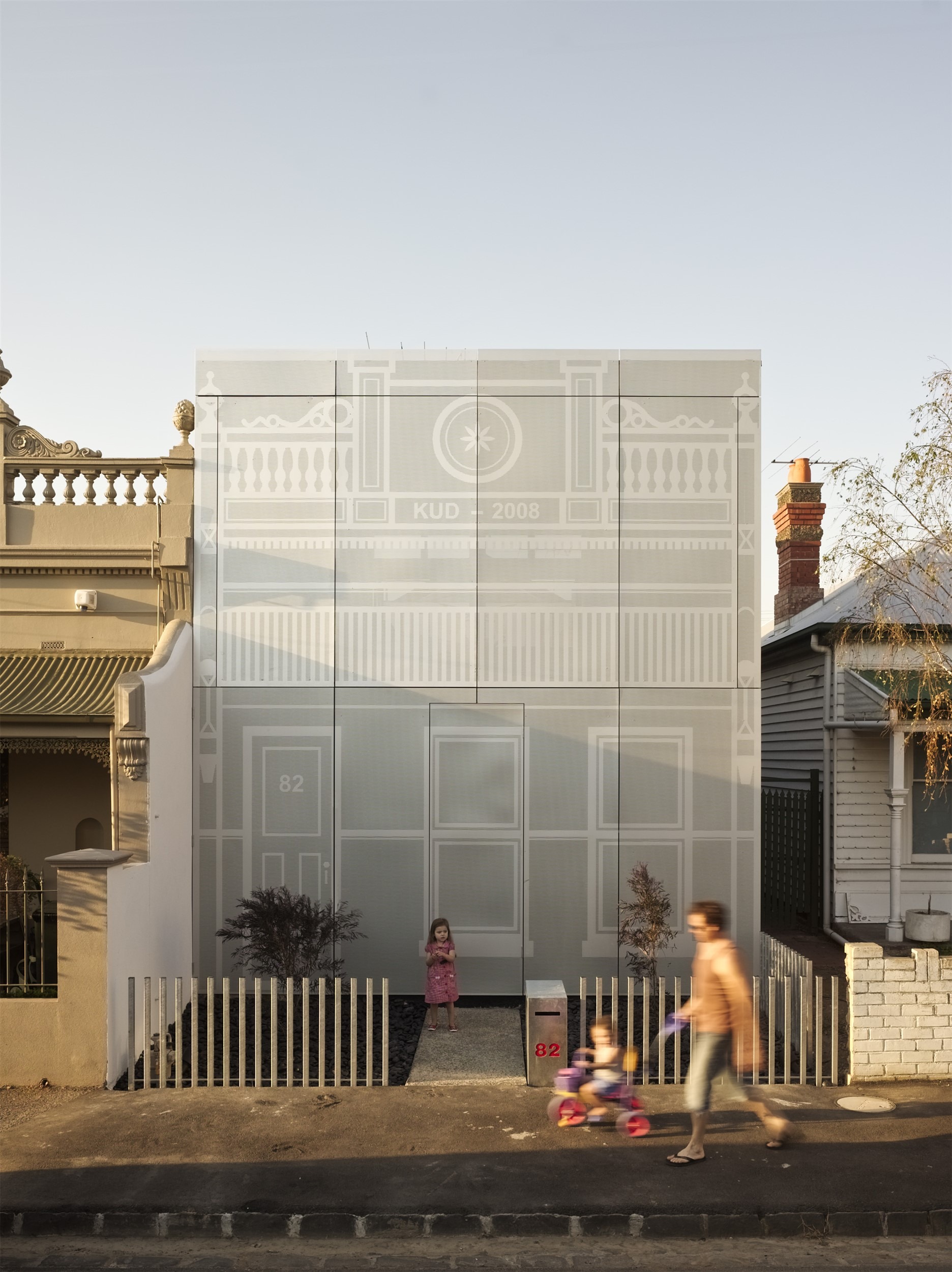
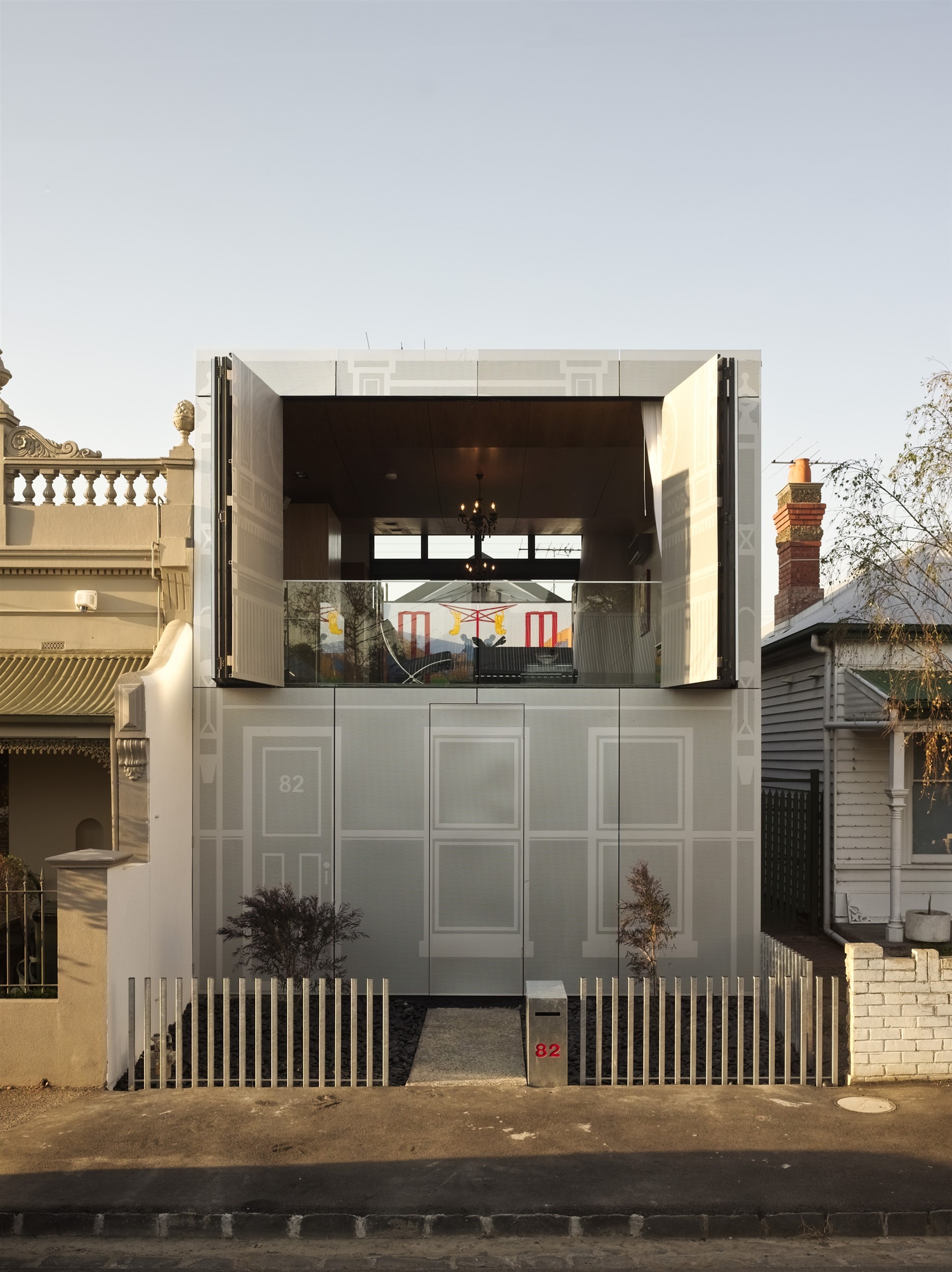
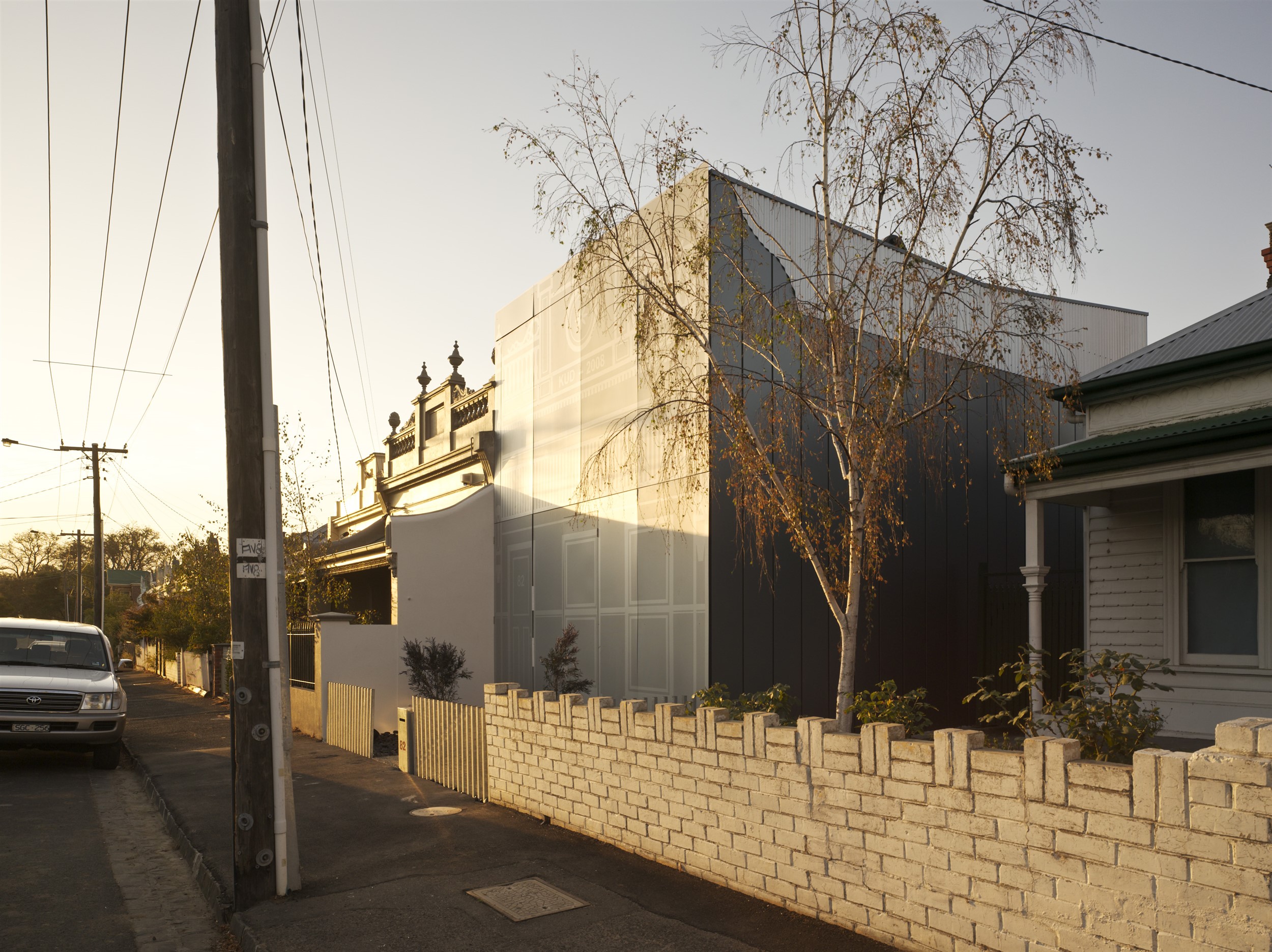
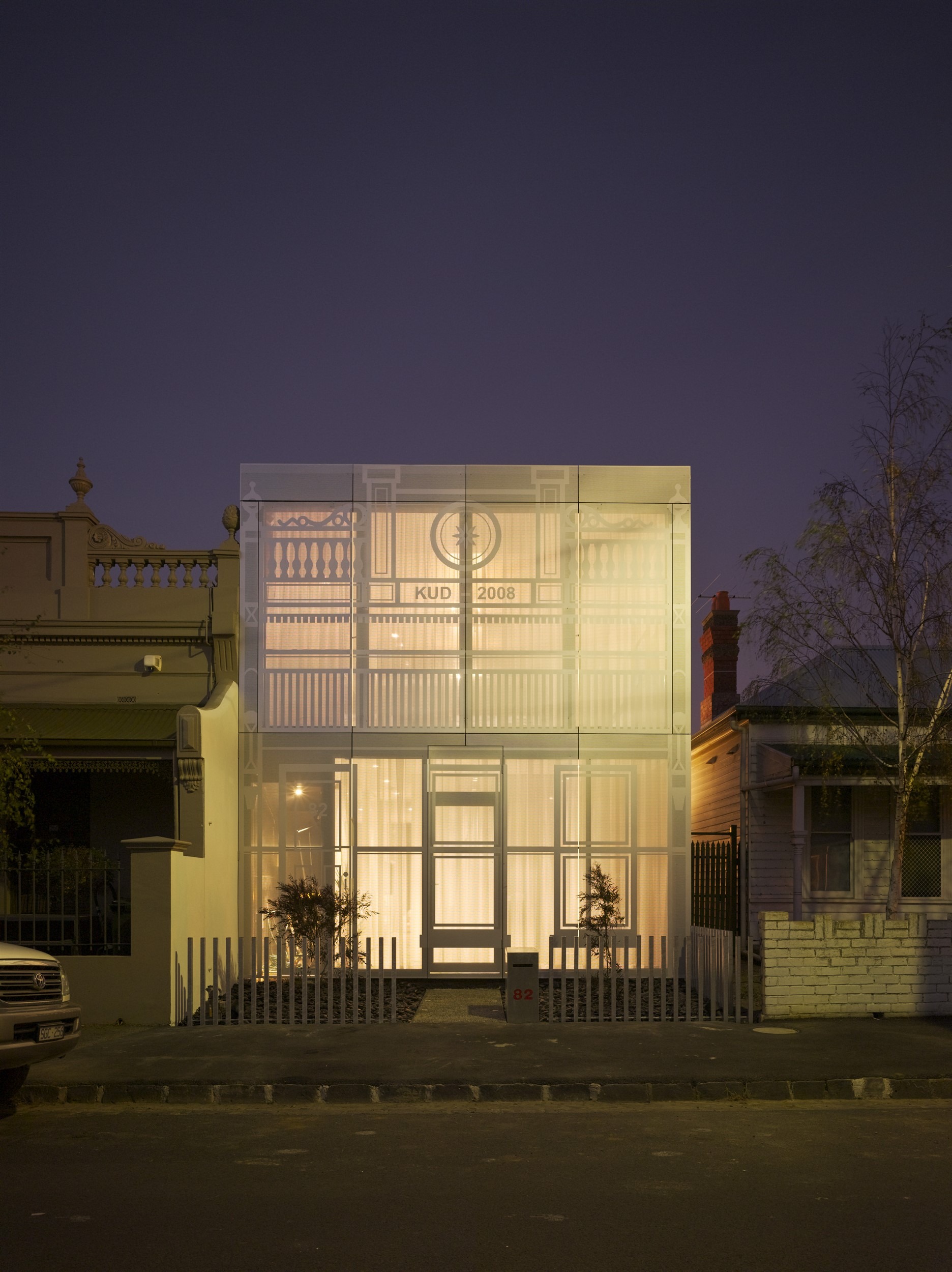
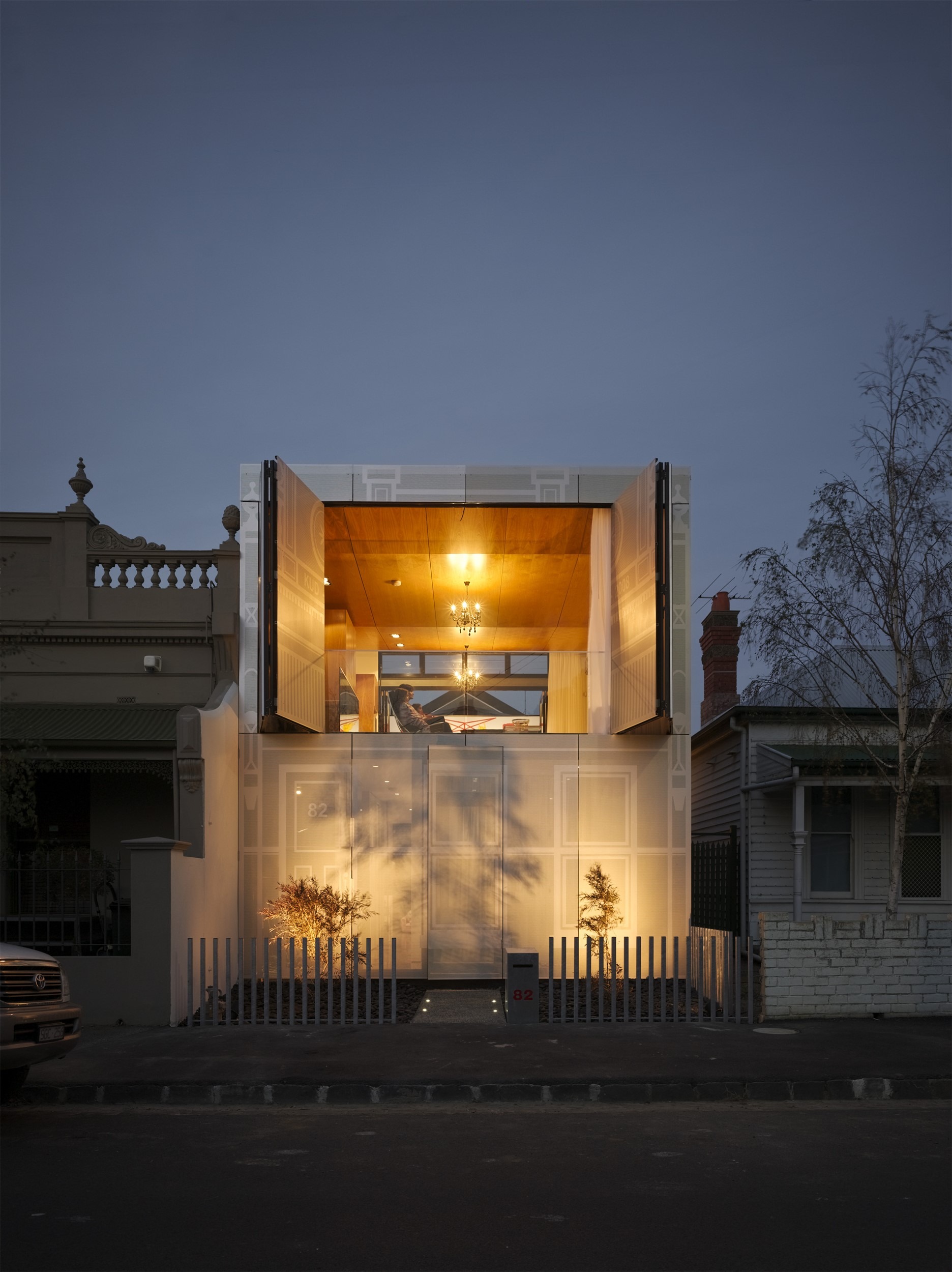
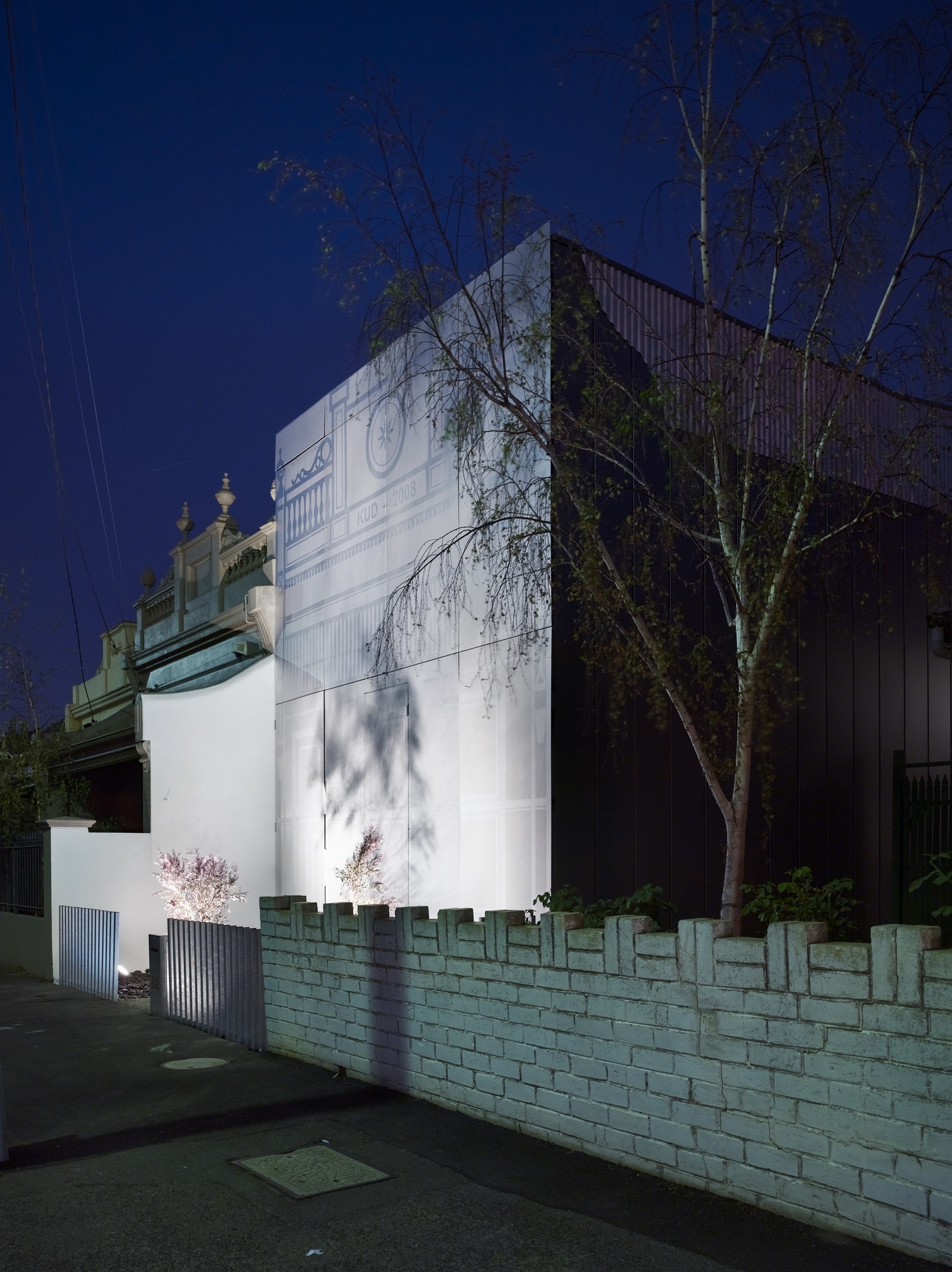
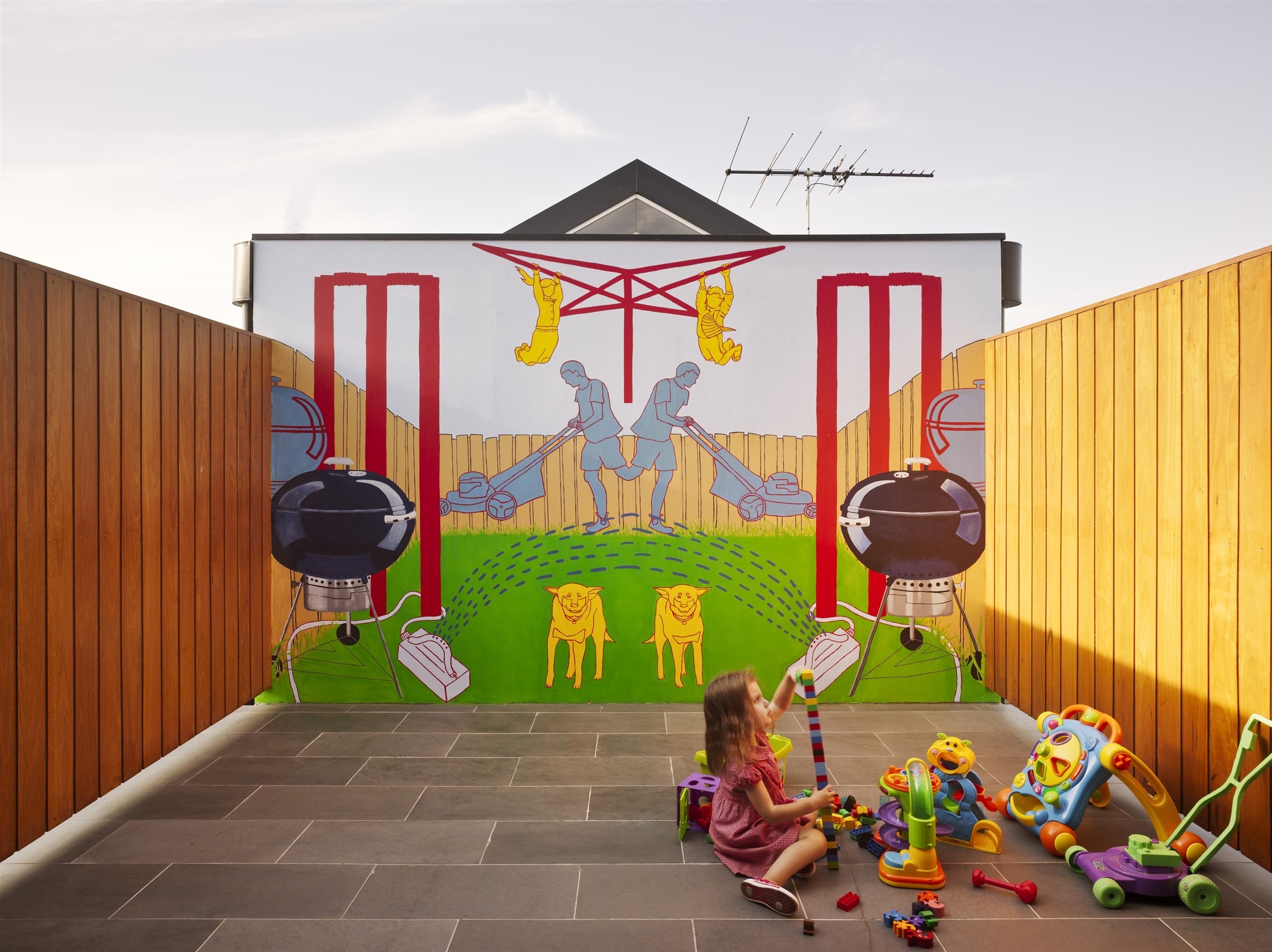
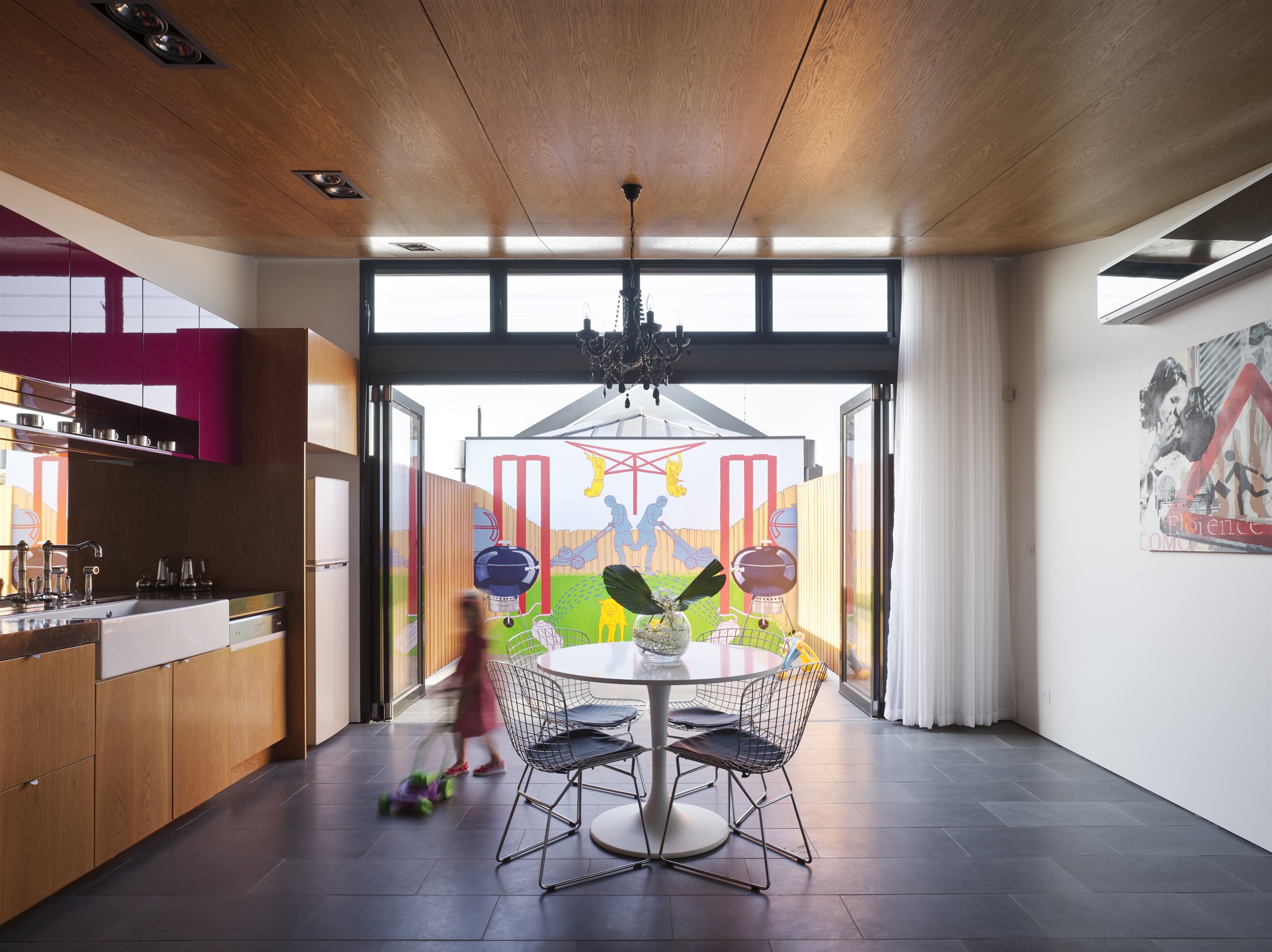
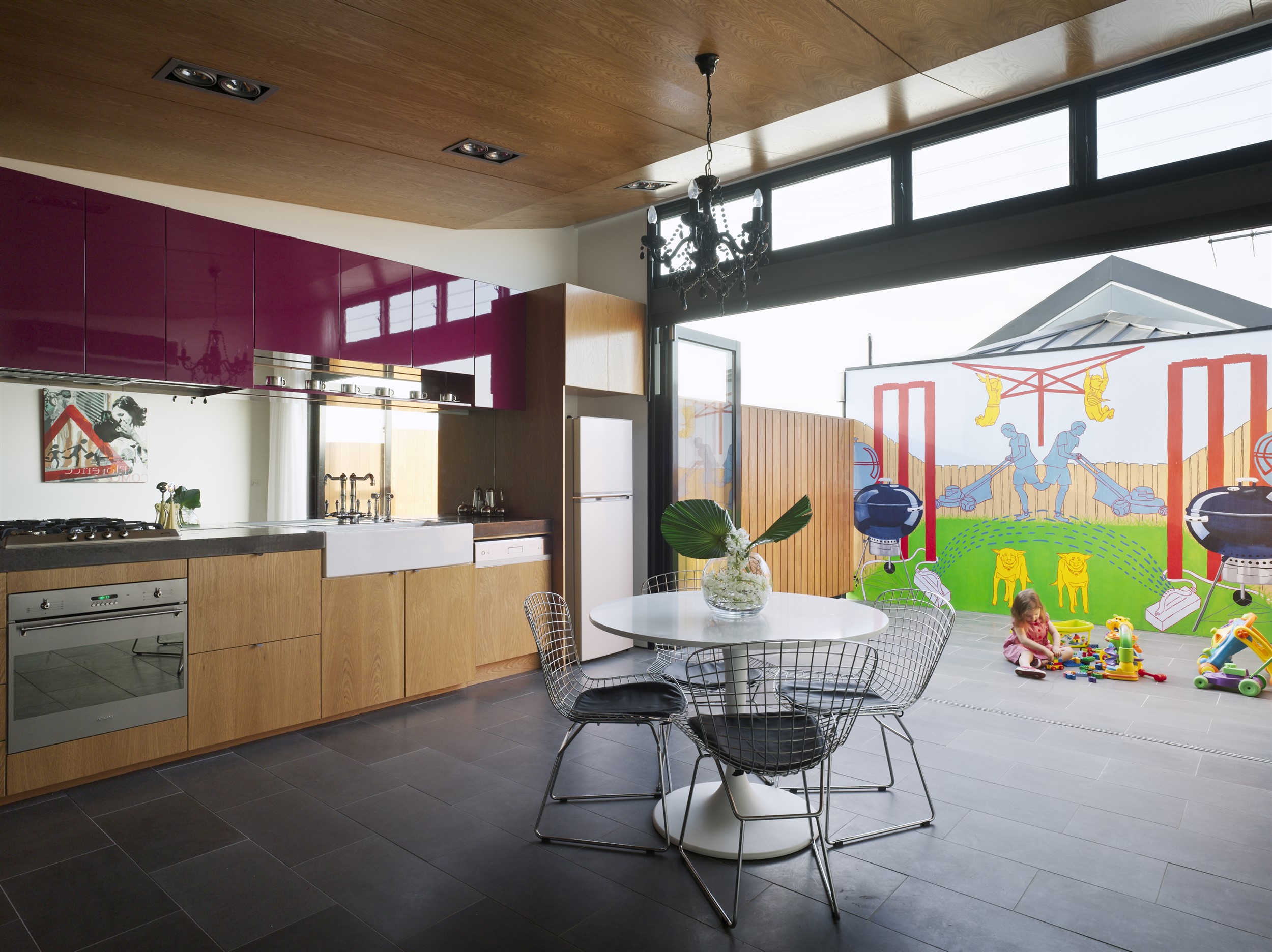
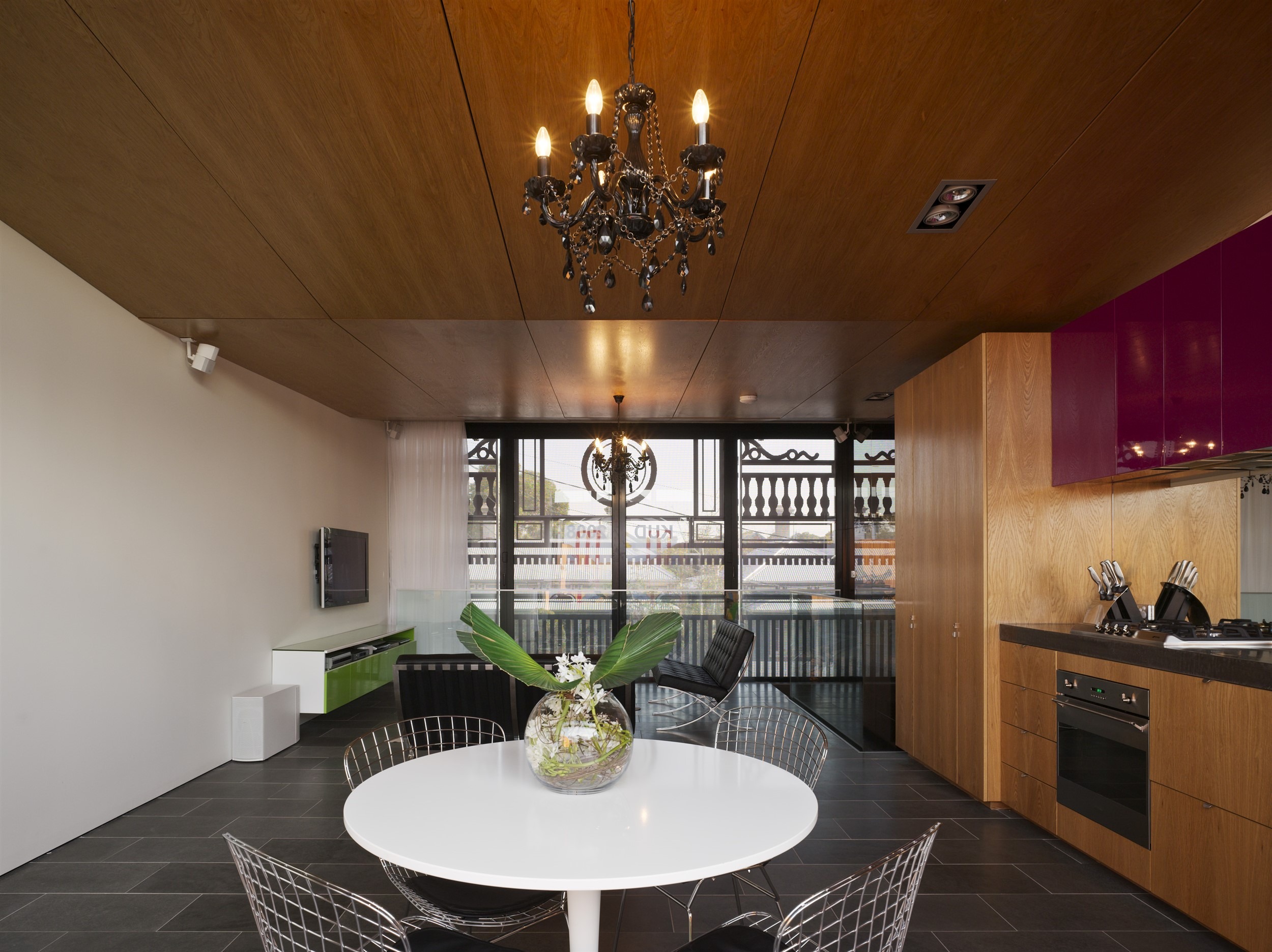
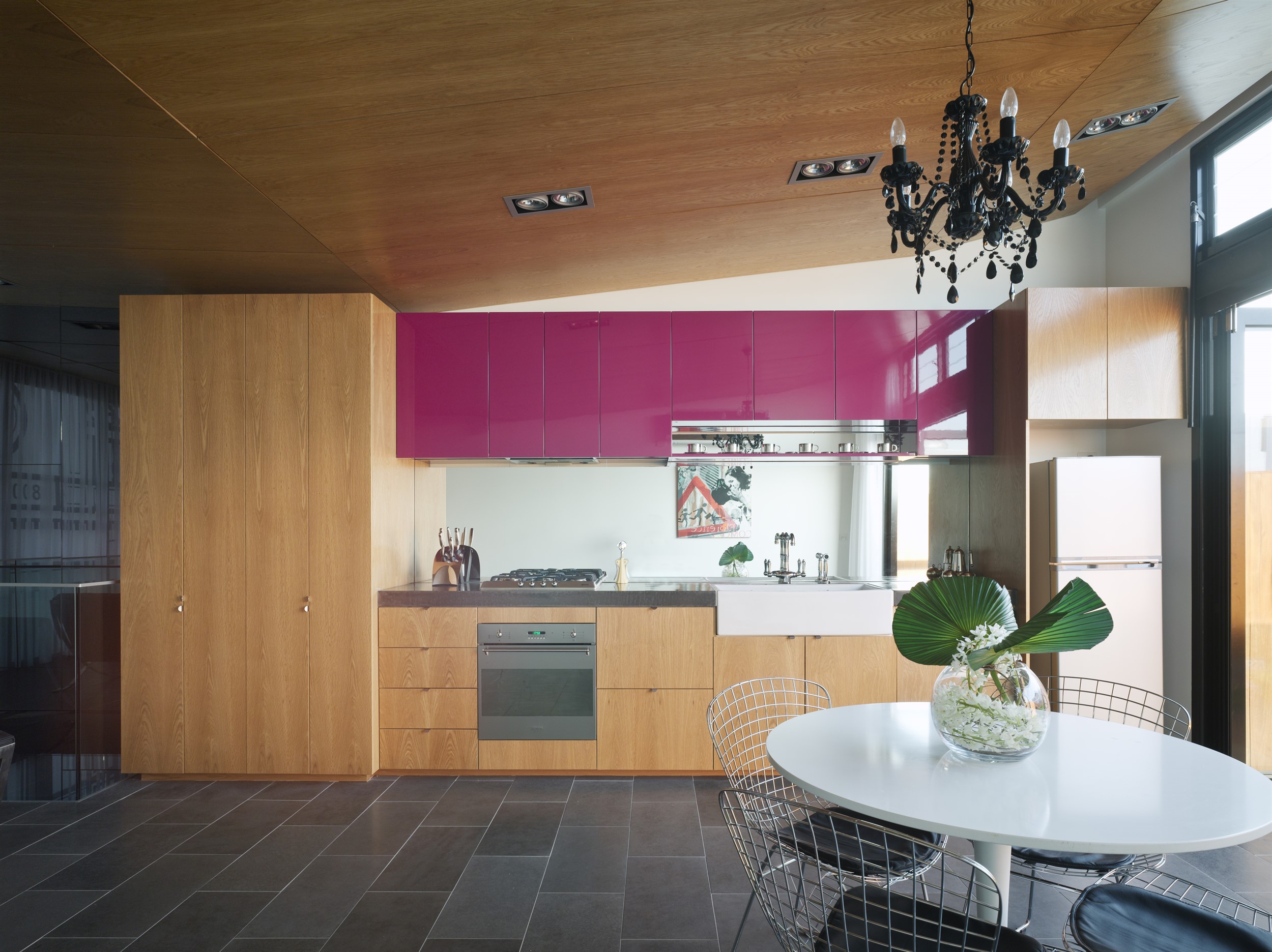
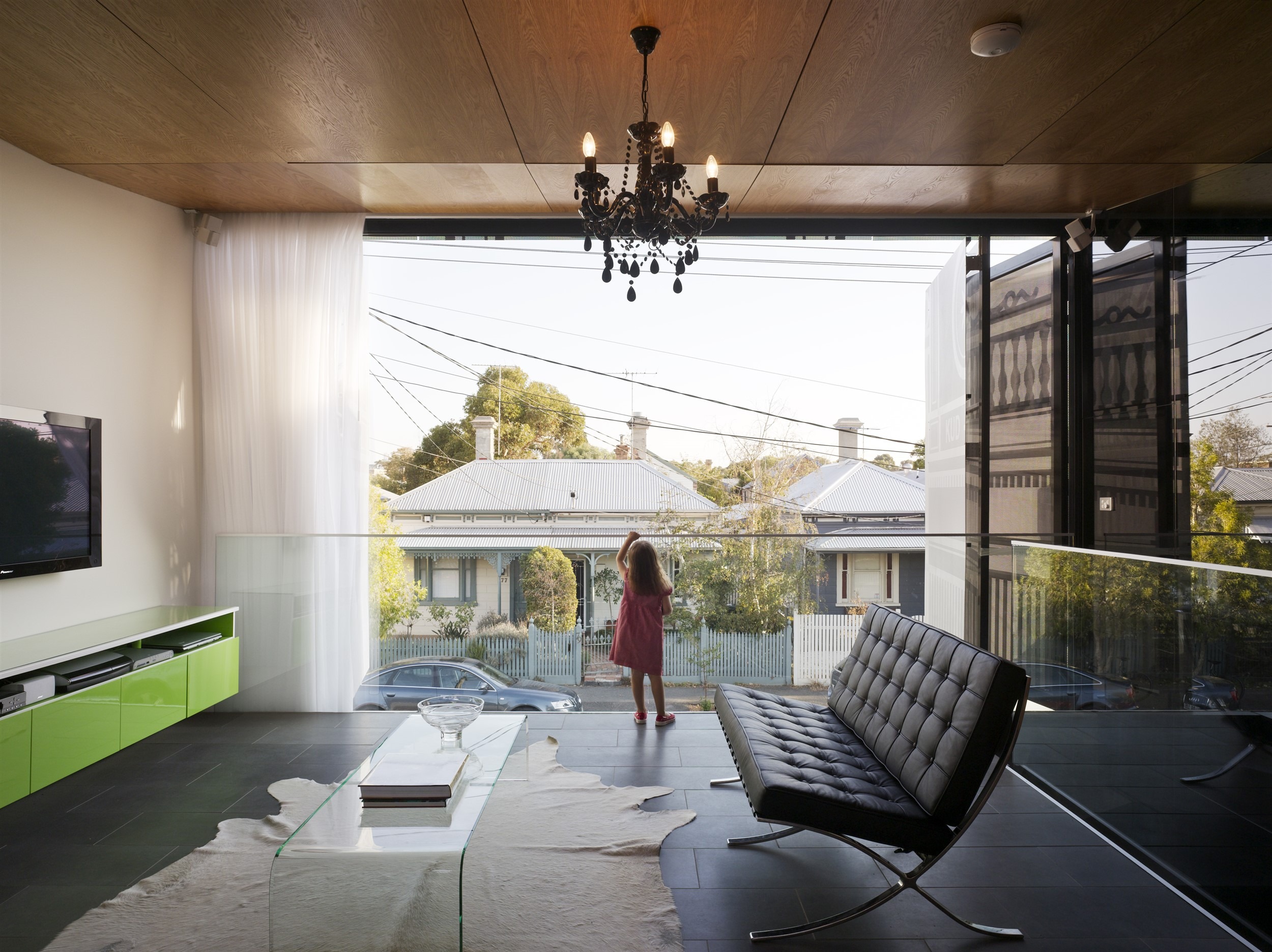
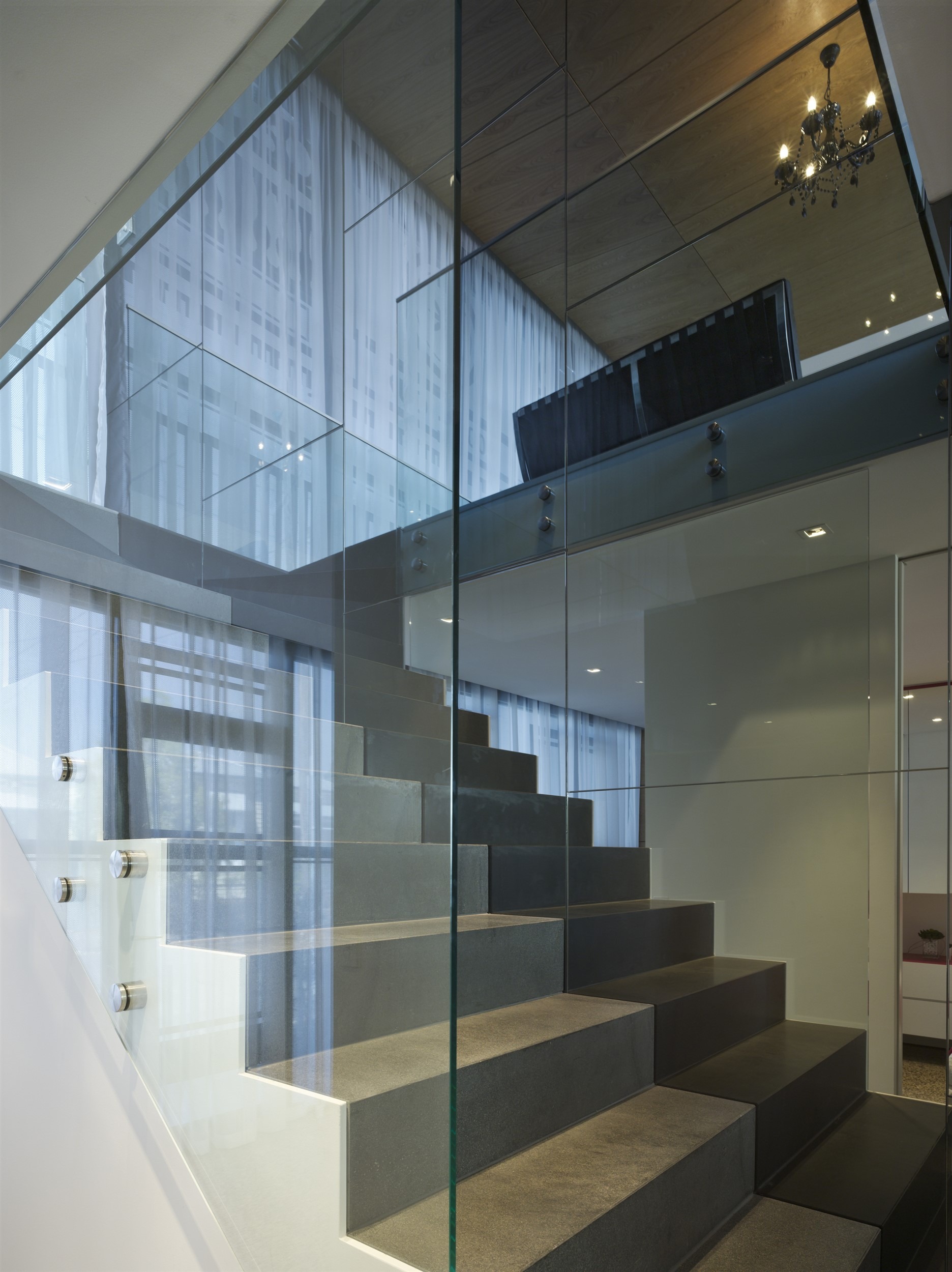
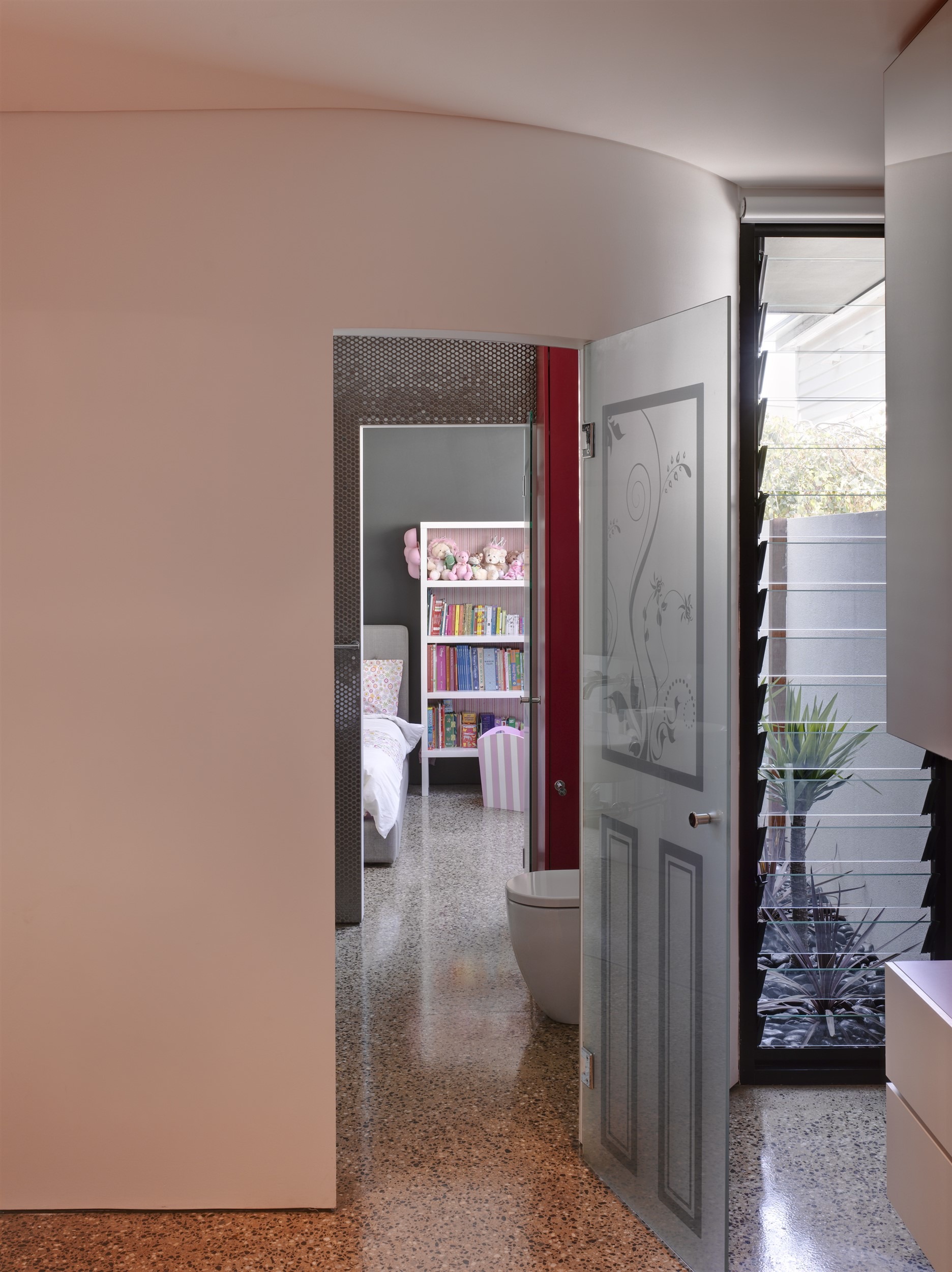
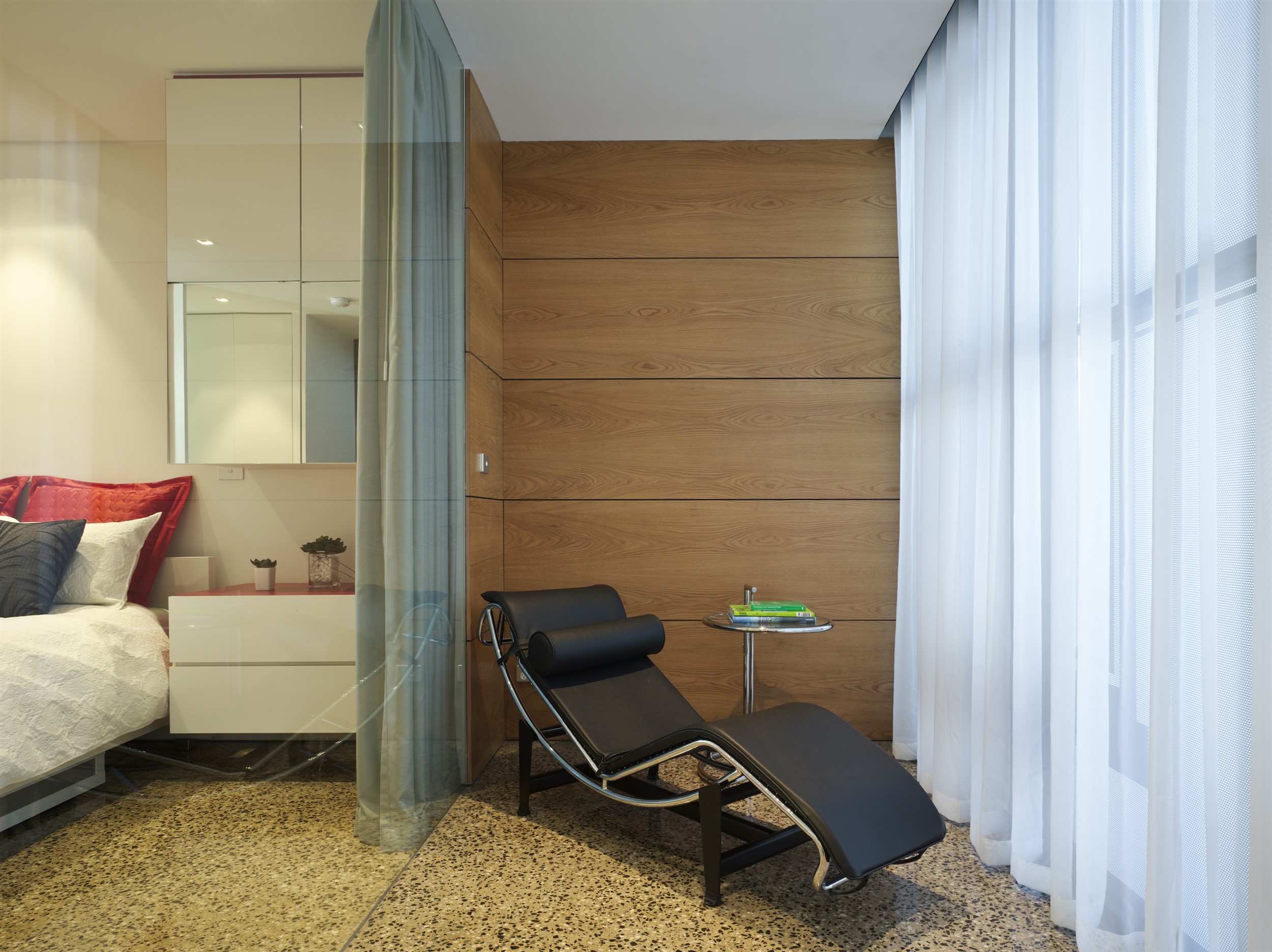
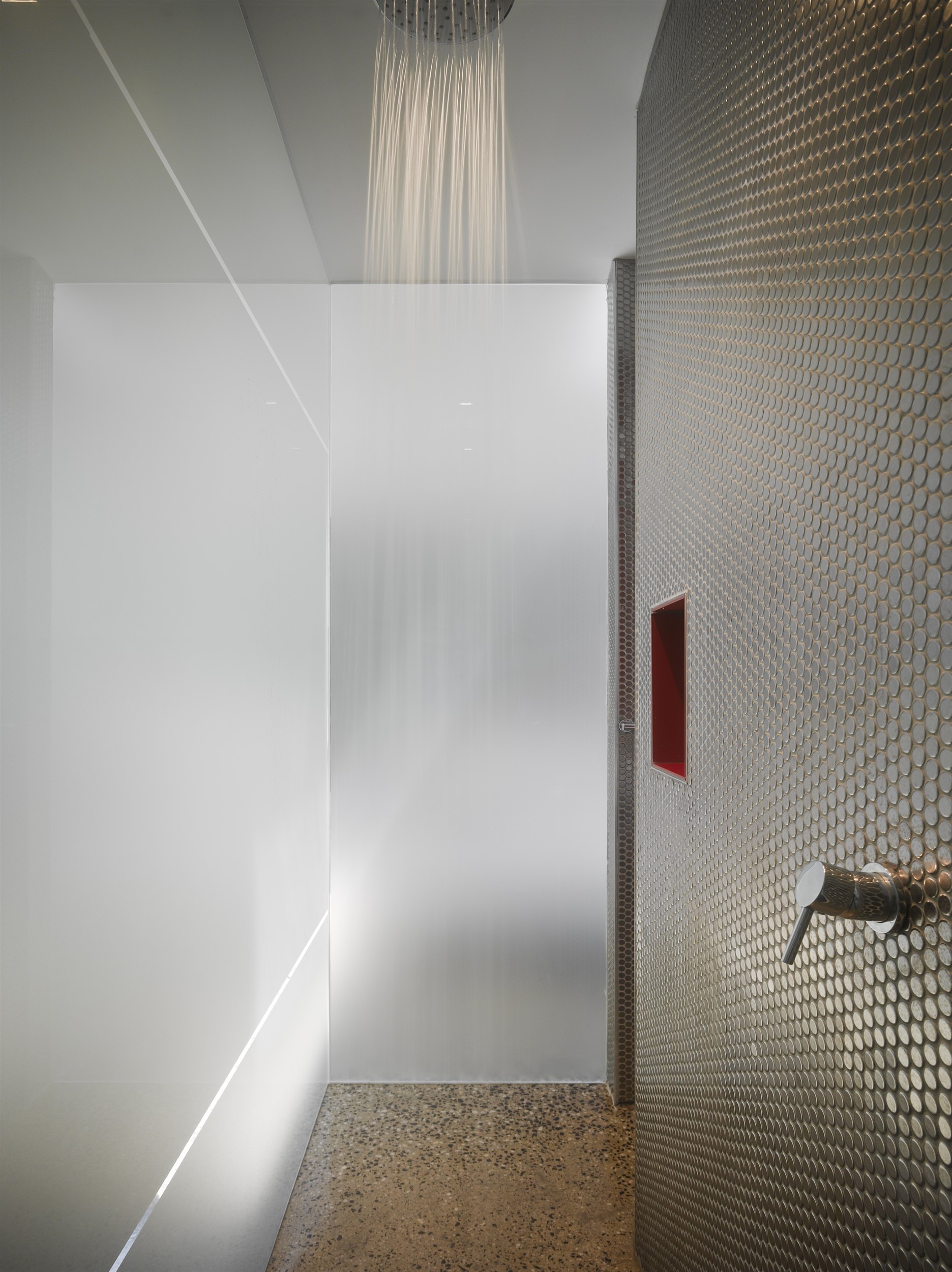
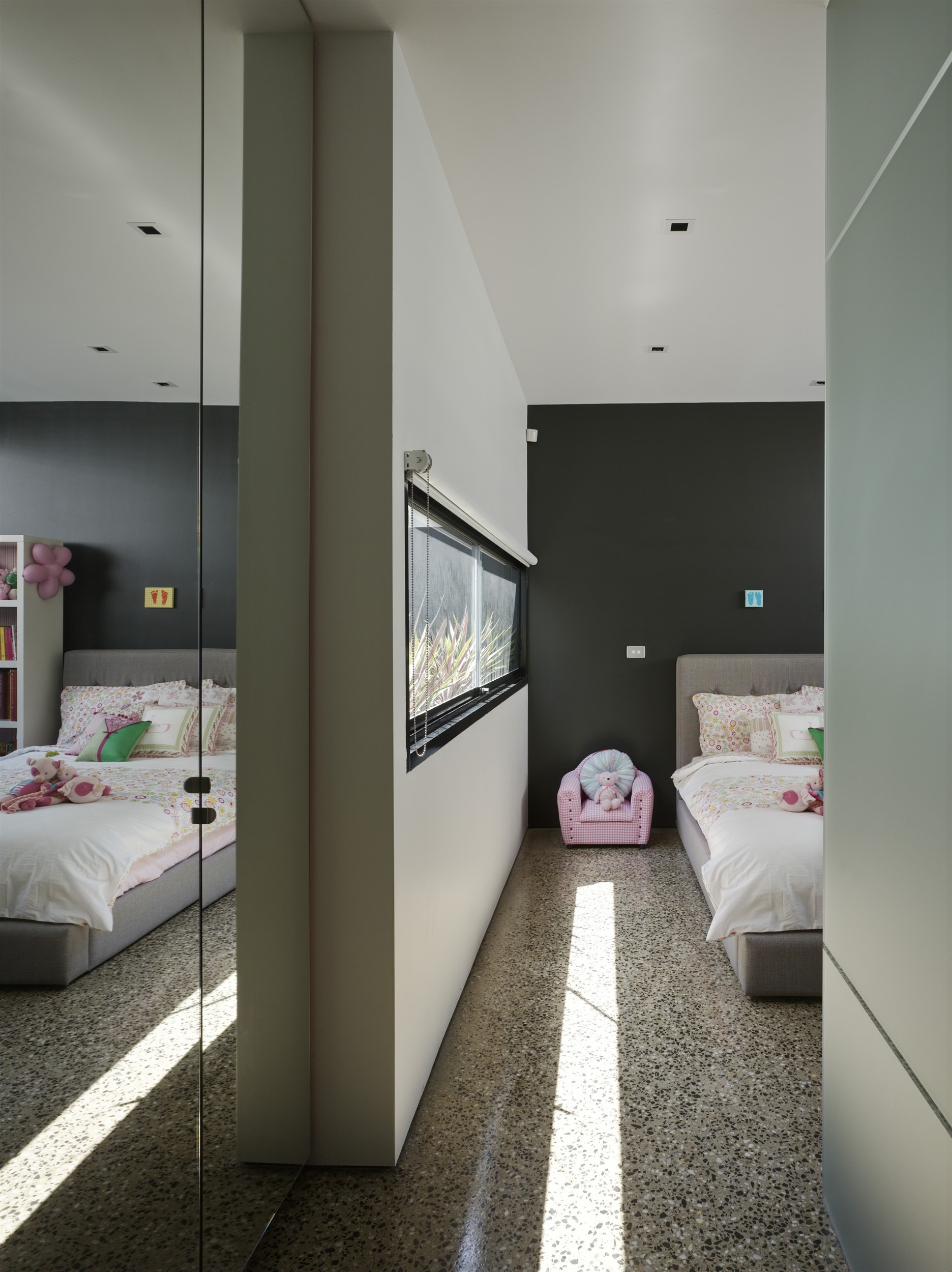
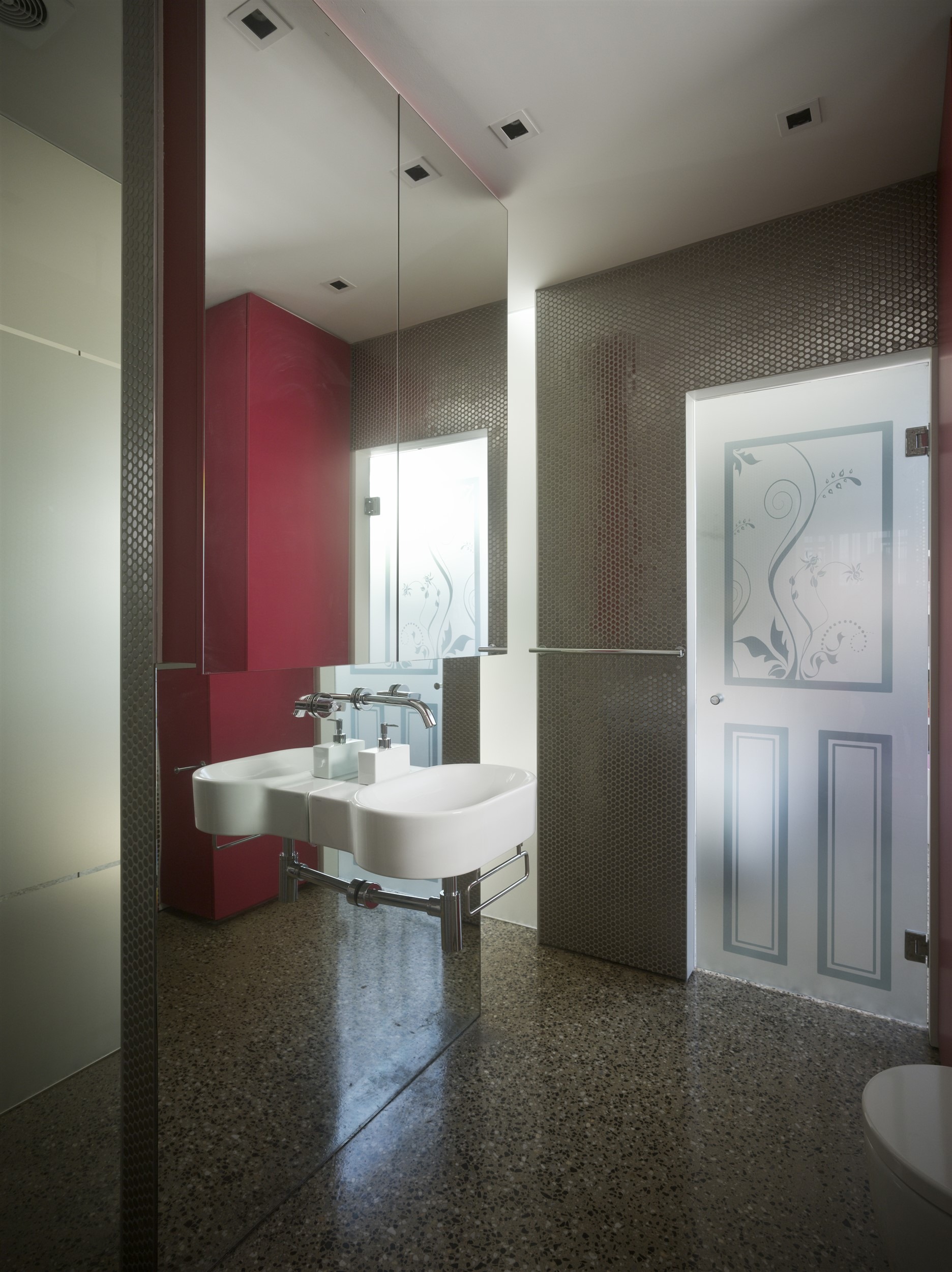
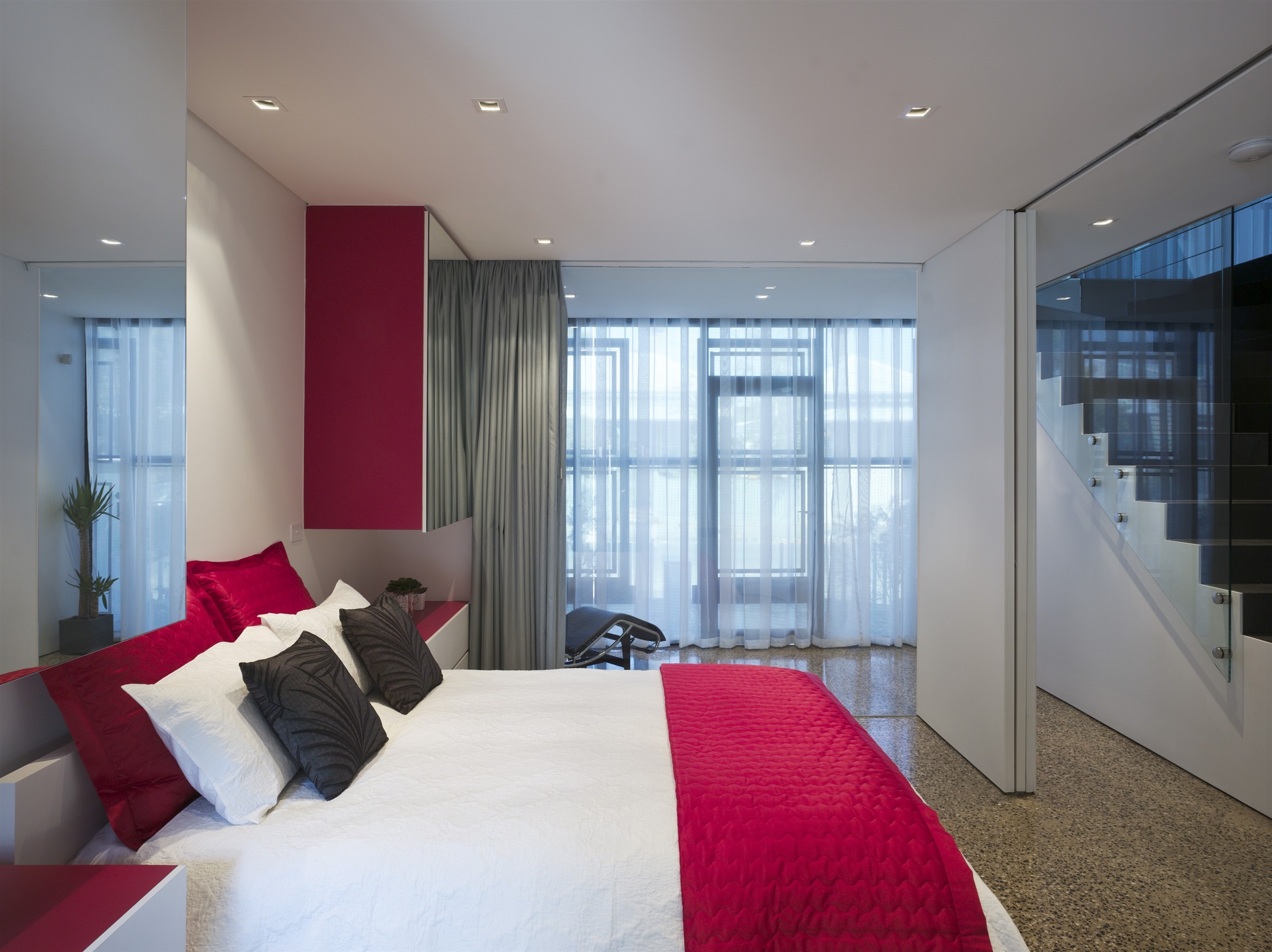
Location
Brunswick,
Victoria
Photographer
Peter BennettsType
ResidentialBuilder
KUDStatus
Built - 2008Client
Billy Kavellaris2009 AIA Awards
Residential Architecture – Finalist
2010 Idea Design Awards
Residential Design – Shortlisted
2010 Australian Interior Design Awards
Colour in Residential Design – Commendation
Award for Emerging Interior Design Practice – Commendation
2011 International Property Awards
Property (Single Unit) Australia
This project to us is a platform to establish a critical dialogue within our built environment; to raise questions as much as it is to finding solutions. The project is a critique on our cultural attitudes and how we determine them. A critique on what we consider to be of heritage significance and how to narrate such ideas in a critical and contemporary manner.
Is the symbolism and the idea more important than the architectural consequence?
We challenge the idea that small inner city blocks cannot respond to complex contextual constraints such as orientation, sustainability, innovative urban infill planning controls and heritage restrictions. Instead of negotiating with these so called ‘constraints’, we utilised them as areas of possibility and exploration for our design processes and discourse.
This once vacant site is nestled at the eastern bookend between a row of single fronted Victorian terraces and a double fronted Edwardian weatherboard house. Our strategy was to critique and respond to our ongoing research into the Terrace typology. We concluded that this demand and attraction for such a housing model has a stronger link with romanticized nostalgia rather than of good design with the emphasis residing on the symbolism of the ornamental facade, which dictates “the neighbourhood character” instead of responding to it.
So….
Our strategy was to break down the elements of the Terrace house, and to critique and respond. Respond to the terrace house’s inability to address solar orientation, the poor liner program that is constantly remodelled with predictable repetitive and limited planning to achieve some sort of link between the active habitable space and the external private open space and the lack of natural light and ventilation into the house.
The main areas of investigation were Symbolism and Ornamentation, the Public and Private realm and redefining its boundaries, Solar Orientation, environmental sustainability and the programming of the plan.
The built form is essentially an urban infill within a very small 5.5×14.4m envelope. The perforated house is our response to establish an alternative language to the accepted notion of our cultural attitude towards critical questions of identity and heritage. We were interested in retaining the ‘idea’ and the ‘symbolism’ of the terrace but elevating the gesture to an ironic or even satirical level to engage in a public debate. The irony is manifested through the idea that it’s only through the absence of matter, that through perforation; the idea of the symbol of the terrace house is manifested rather than a physical reproduction of terrace house.
We wanted the house to be more than just a façade. More than just a message or a graphic stuck to a building. Our building was not an urban canvas paying tribute to Venturi’s “decorated shed”, instead the external facade could be experienced internally and is also a multi-functional device that constantly transforms the built form from solid to void, from private to public, from opaque to translucent. By day the building is heavy and reflective and by night inverting into a soft translucent permeable light box. The operable wall or the absence of the façade enabled us to remove the idea that houses are static.
The use of operable walls, doors, curtains and glass walls enables the occupants to change the experience and environment. This architectural manipulation of space blurred the boundaries between inside and outside, the public and private realm. The manipulated spaces overlapped and borrowed the amenity and context of it’s surrounding environment.
The plan inverts the traditional terrace program with the active living zones on the first floor opening onto a north facing terrace thereby generating a primary northerly orientation to a south facing block. The perforated house incorporates passive sustainable interventions by orientating north glass bi-fold doors and louvers for cross ventilation as the primary means of cooling. In addition, solar hot water and 5 star rated sanitary ware fixtures were incorporated. The north facing terrace redefines the “aussie” backyard reinforced by the childlike mural reminiscing on a past era and making commentary on the changing demography of the family unit and ultimately the inner city house typology.

Location
Brunswick,
Victoria
Photographer
Peter BennettsType
ResidentialBuilder
KUDStatus
Built - 2008Client
Billy Kavellaris2009 AIA Awards
Residential Architecture – Finalist
2010 Idea Design Awards
Residential Design – Shortlisted
2010 Australian Interior Design Awards
Colour in Residential Design – Commendation
Award for Emerging Interior Design Practice – Commendation
2011 International Property Awards
Property (Single Unit) Australia
This project to us is a platform to establish a critical dialogue within our built environment; to raise questions as much as it is to finding solutions. The project is a critique on our cultural attitudes and how we determine them. A critique on what we consider to be of heritage significance and how to narrate such ideas in a critical and contemporary manner.
Is the symbolism and the idea more important than the architectural consequence?
We challenge the idea that small inner city blocks cannot respond to complex contextual constraints such as orientation, sustainability, innovative urban infill planning controls and heritage restrictions. Instead of negotiating with these so called ‘constraints’, we utilised them as areas of possibility and exploration for our design processes and discourse.
This once vacant site is nestled at the eastern bookend between a row of single fronted Victorian terraces and a double fronted Edwardian weatherboard house. Our strategy was to critique and respond to our ongoing research into the Terrace typology. We concluded that this demand and attraction for such a housing model has a stronger link with romanticized nostalgia rather than of good design with the emphasis residing on the symbolism of the ornamental facade, which dictates “the neighbourhood character” instead of responding to it.
So….
Our strategy was to break down the elements of the Terrace house, and to critique and respond. Respond to the terrace house’s inability to address solar orientation, the poor liner program that is constantly remodelled with predictable repetitive and limited planning to achieve some sort of link between the active habitable space and the external private open space and the lack of natural light and ventilation into the house.
The main areas of investigation were Symbolism and Ornamentation, the Public and Private realm and redefining its boundaries, Solar Orientation, environmental sustainability and the programming of the plan.
The built form is essentially an urban infill within a very small 5.5×14.4m envelope. The perforated house is our response to establish an alternative language to the accepted notion of our cultural attitude towards critical questions of identity and heritage. We were interested in retaining the ‘idea’ and the ‘symbolism’ of the terrace but elevating the gesture to an ironic or even satirical level to engage in a public debate. The irony is manifested through the idea that it’s only through the absence of matter, that through perforation; the idea of the symbol of the terrace house is manifested rather than a physical reproduction of terrace house.
We wanted the house to be more than just a façade. More than just a message or a graphic stuck to a building. Our building was not an urban canvas paying tribute to Venturi’s “decorated shed”, instead the external facade could be experienced internally and is also a multi-functional device that constantly transforms the built form from solid to void, from private to public, from opaque to translucent. By day the building is heavy and reflective and by night inverting into a soft translucent permeable light box. The operable wall or the absence of the façade enabled us to remove the idea that houses are static.
The use of operable walls, doors, curtains and glass walls enables the occupants to change the experience and environment. This architectural manipulation of space blurred the boundaries between inside and outside, the public and private realm. The manipulated spaces overlapped and borrowed the amenity and context of it’s surrounding environment.
The plan inverts the traditional terrace program with the active living zones on the first floor opening onto a north facing terrace thereby generating a primary northerly orientation to a south facing block. The perforated house incorporates passive sustainable interventions by orientating north glass bi-fold doors and louvers for cross ventilation as the primary means of cooling. In addition, solar hot water and 5 star rated sanitary ware fixtures were incorporated. The north facing terrace redefines the “aussie” backyard reinforced by the childlike mural reminiscing on a past era and making commentary on the changing demography of the family unit and ultimately the inner city house typology.
